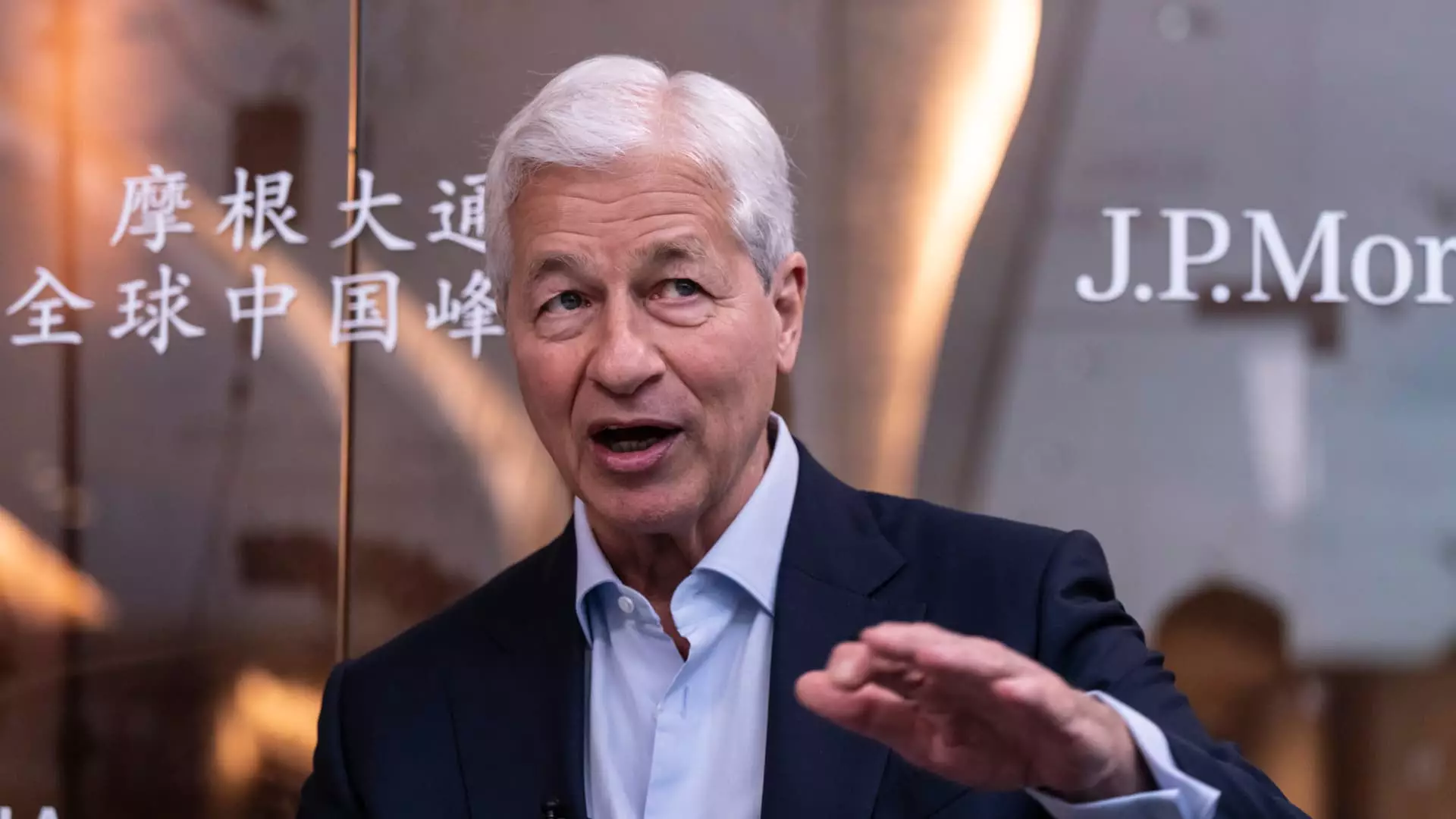Once considered a slow mover in the realm of online investing, JPMorgan Chase is asserting itself as a decisive player in the digital finance game. With its recent strategic overhaul, the bank is launching tools that aim to streamline the bond purchasing process and make brokered certificates of deposit (CDs) readily accessible to its users. This move marks a significant departure from its previous timid approach towards self-directed investing. Out of the shadows and into the spotlight, the Chase mobile app is now not just a tool for checking balances but a one-stop-shop for serious investors seeking to engage more actively with fixed-income securities.
But can this transformation be categorized as a genuine evolutionary leap, or is it merely a cosmetic upgrade? While JPMorgan claims it is prioritizing client experience—reflected in its flashy new features, such as customizable screens for comparing bond yields—one cannot help but wonder about the genuineness of this newfound focus. Several past missteps have led to skepticism; its earlier attempts to integrate online investing, like the 2018 “You Invest” initiative, were unveiled with much fanfare but seemed to stumble out of the gate. The failure to resonate with a target audience might make some question whether JPMorgan’s current investment push will be any different.
Learning from Mistakes
In the unforgiving world of finance, there are always valuable lessons embedded in failures, and JPMorgan’s CEO Jamie Dimon is no stranger to this notion. By bluntly labeling their former online product as inadequate, Dimon displayed a self-awareness that is often lacking in corporate rhetoric. The hiring of Paul Vienick, a seasoned professional with rich experience from TD Ameritrade, Morgan Stanley, and Bank of America, signals a shift in the bank’s approach to wealth management. This appointment reflects a clear understanding of the fact that simply existing in the digital space is not enough; a focused strategy that addresses the unique needs of self-directed investors is crucial.
However, such a realization raises further questions: How transformative can an organization be when the grassroots ethos of adapting to user needs had to be learned the hard way? Vienick admits that wealth management has room for significant growth, especially since the bank currently holds the deposits of half of America’s affluent households but claims only a 10% share of their invested assets. This strategic dreaming provides a fascinating insight into the bank’s ambitious goal of not merely participating but dominating the digital investment landscape.
Competing with the Titans of Investment
Despite its storied history and immense resources, JPMorgan still pales in comparison to established online brokerage firms that have spent decades cultivating investor trust. Rivals like Charles Schwab and Fidelity dwarf JPMorgan’s progress, with enviable portfolios built on years of innovation and client satisfaction. The gargantuan tasks of catching up to these mature platforms is a daunting endeavor, and one can’t dismiss the probability of market resistance. Verdant fields already tilled by competitors may pose challenges that a single app or promotional incentives, like the all-too-human incentive of up to $700 for switching to its platform, may not effectively combat.
Yet, there’s a glimmer of hope on the horizon. By appealing directly to self-directed investors, who wish to take control of their investment strategies, JPMorgan is targeting a growing demographic that craves engagement and autonomy. Vienick mentions the bank’s aim to facilitate the buying and researching of bonds, a vehicle that could help lure those disenchanted with mutual funds. With the anticipated capability for after-hours trading, JPMorgan is clearly attempting to carve its niche in this highly competitive landscape.
Ambition and Accessibility
At the core of JPMorgan’s strategy lies the aspiration to consolidate its clients’ financial activities, creating a seamless ecosystem that not only promotes its investment services but also ties in banking and credit offerings. This strategic move stands to benefit customers by presenting a unified financial perspective and facilitating instantaneous transactions. Promoting a vision where banking, investing, and credit cards coexist harmoniously reflects a bold ambition to reshape how users engage with their finances.
Yet, while the transformation is noteworthy, skepticism remains. Will this drive be met with user apathy? Many financial institutions promise rich features and seamlessness, yet often deliver only complexity. The question persists: can JPMorgan deliver on its promises without losing itself in the cacophony of its own expansive product offerings? Only time will tell if this monumental shift in operational thinking will resonate with the customers they are aiming to capture.
As JPMorgan continues its journey from relative obscurity to digital investing prominence, one can observe both the potential and the peril underlying its ambitious plans. The landscape is changing, and to lead, JPMorgan must ensure that its improving technology is accompanied by genuine customer-centricity—otherwise, it risks being just another faceless entity in a crowded digital marketplace.


Leave a Reply